Uljin Bulyeongsa Temple (불영사(울진))
0m 15320 2022-01-03
48, Buryeongsa-gil, Uljin-gun, Gyeongsangbuk-do
+82-54-783-5004
Bulyeongsa Temple, located at the western foot of Cheonchuksan Mountain in Uljin, Gyeongsangbuk-do, was built during the Silla period. ‘Bulyeongsa’ means ‘the reflection of Buddha’s shadow on the pond.’ A lovely path leads from the parking area to the temple, and a beautiful pond and green farm in the courtyard give the temple, inhabited by Buddhist nuns, a cozy and welcoming feeling.
The 13 km-long Bulyeongsa Valley is also found around Bulyeongsa Temple. With unique rock formations and thick forest, the valley creates an almost mystical atmosphere. Even though Bulyeongsa Valley is not as magnificent or splendid as Cheonbuldong Valley at Seoraksan Mountain or Mureung Valley and Bogyeongsa Valley at Odaesan Mountain, it offers a serene and beautiful view against the backdrop of Cheonchuksan Mountain.
Uljin Geumgang Pine Trail (울진 금강소나무 숲길)
6.7 Km 41277 2023-03-07
527, Sibiryeong-ro, Uljin-gun, Gyeongsangbuk-do
+82-54-781-7118
The Pine Forest Trail on Geumgangsan Mountain in Uljin goes through a beautiful forest of lush pine trees growing tall and straight with uncommonly bright bark. These special trees are called Geumgang Pine Trees, sometimes shortened to "gangsong" ('songi' is pine in Korean). The forest has many old trees, including at 520-year-old "grandfather pine," leading to the forest being designated a protected status. Visitors who wish to walk through the pine tree tunnel and enjoy a 'forest bathing' experience must make reservations in advance.
Geumgangsong Ecorium (금강송 에코리움)
6.7 Km 1 2024-01-09
552 Sibiryeong-ro, Geumgangsong-myeon, Uljin-gun, Gyeongsangbuk-do
Geumgangsong is a pine tree that is deemed a superior wood variety due to its red hue, minimal cracking, and straight trunk. This tree has been rigorously safeguarded and managed since ancient times, including regulated production and preservation, earning it the moniker "royal pine tree." Situated within the Red Pine Habitat in Uljin, the Geumgangsong Ecorium is a lodging faoffers a variety of facilities: cozy lodging, a Geumgangsong-themed exhibition hall, a sauna, a restaurant, and a trail for forest excursions. It is a highly recommended destination for those seeking an idyllic retreat amid pristine nature with a range of activities. Visitors can immerse themselves in stress-relieving pursuits such as trekking along trails lined with towering red pines, practicing yoga, and crafting soap.
Tonggosan National Recreational Forest (국립 통고산자연휴양림)
7.4 Km 30422 2020-03-27
880, Buryeonggyegok-ro, Uljin-gun, Gyeongsangbuk-do
+82-54-783-3167
Situated in the upper Bulyeongsa Valley, Tonggosan National Recreational Frorest, rarely visited by people in the past, still preserves much of its ancient beauty. Weathered white granite envelops the valley while a variety of waterfalls forms what looks like uniquely shaped water pots.
Next to the valley is Bulyeongsa Temple built by Monk Uisang (during the reign of King Jindeok of the Silla Period). Visitors can enjoy beautiful fall foliage of the forest, and there are a variety of nearby attractions from Bulyeongsa Valley, beaches on the East Coast, and Deokgu/Baekam Hot Springs. Fall foliage tends to peak between October 10th and October 20th.
Visitors must bring their own tents, utensils, toiletries, and other necessary items. The cafeteria in Tonggosan National Recreational Forest opens between mid-July and August.
Seongnyugul Cave [National Geopark] (성류굴 (경북 동해안 국가지질공원))
9.5 Km 20080 2024-01-09
221 Seongnyugul-ro, Geunnam-myeon, Uljin-gun, Gyeongsangbuk-do
Seongnyugul Cave, a Natural Monument of Korea, is a limestone cave with a general northeast-southwest orientation. It has a total length of about 870 meters, of which only a strip of 270 meters is open to the public. Inside the cave are a variety of cave formations, including stalactites, stalagmites, columns, and cave pearls, which are commonly found in limestone caves. Unlike other limestone caves in Korea, Seongnyugul Cave has twisted columns and submerged stalagmites. Twisted columns are often broken in the middle due to earthquakes that occurred after the columns were formed. Submerged stalagmites are notable because stalagmites usually do not grow under water as they are made from droplets that fall from the ceiling. As such, stalagmites found underwater were submerged after they were created, indicating that they were created during the Ice Age, when the East Sea was lower than the present level.
(Credit: Gyeongbuk Donghaean Geopark)
Wangbicheon Ige Daege (Wangbicheon Branch) (왕비천이게대게왕비천점)
10.9 Km 0 2024-01-09
3630 Buryeonggyegok-ro, Uljin-gun, Gyeongsangbuk-do
Wangbicheon Ige Daege, which means "This is Snow Crab," is a restaurant located in Susan-ri, Guennam-myeon, Uljin-gun, Gyeongsangbuk-do that specializes in snow crab cuisine. Featured multiple times on TV, this eatery is perfect for family meals and gatherings of any size. The signature dish is steamed red snow crab. Additionally, the crab jjabagi, a traditional delicacy of salted snow crab preserved from a time before refrigeration and now updated for contemporary palates, is a favorite among patrons. The menu also includes hot stone pot crab bibimbap, deep-fried crab mandu and vegetables in spicy sauce, and snow crab hot pot. Each dish is complemented by a selection of meticulously prepared side dishes, creating an experience akin to a traditional Korean Table D'hote. Conveniently situated near Uljin General Bus Terminal, the restaurant also boasts easy access to local attractions like Uljin Wangbicheon Park and Uljin Port.
Uljin Euneo Bridge (울진은어다리)
12.5 Km 0 2023-12-27
178-2, Susan-ri, Uljin-gun, Gyeongsangbuk-do
Uljin Euneo Bridge is located at the mouth of Namdaecheon Stream, adorned with sculptures inspired by sweetfish on both sides. The area around the bridge is the largest habitat of sweetfish in Korea, and visitors can see sweetfish returning to the river from the sea in September and October. The sight of the school of sweetfish swimming resemble waves of water glistening with sunlgiht. Uljin Euneo Bridge is also famous as a sunrise and sunset spot, and its proximity to Uljin Beach and Mangyangjeong Beach makes it easier to take a look around the whole area.
Uljin Hyeonjongsan Wind Farm (울진현종산풍력발전소)
12.5 Km 0 2024-02-07
San 174-2 Samsan-ri, Giseong-myeon, Uljin-gun, Gyeongsangbuk-do
This eco-friendly power plant generates electric energy using wind turbines installed on Hyeonjongsan Mountain, an area previously affected by forest fires. It has also become a favored destination for social media enthusiasts, offering photo opportunities with the ocean, mountainous terrain, and the striking silhouette of a large propeller. The journey to the power plant features picturesque views along the Hyeonjongsan Mountain road. A short walk from the parking area leads to several operational wind turbines. Additionally, the site has various photo zones, including vibrant pinwheels and rainbow-colored blocks, providing an appealing backdrop for photographs.
Uljin Wangpicheon Park (울진 왕피천 공원)
12.6 Km 49182 2024-02-08
121 Uljinjungang-ro, Uljin-eup, Uljin-gun, Gyeongsangbuk-do
Wangpicheon Park, nestled along the Wangpicheon Stream, is a haven of natural ecosystems and stands as a unique ecological park in Korea, resembling a miniature version of nature. The park encompasses exhibition halls, a performance hall, and an eco-park, offering diverse experiences. The Uljin Insectarium and Uljin Aquarium within the park provide interactive opportunities for visitors to engage with insects and marine life, enhancing their understanding of nature's significance. Additionally, nearby attractions such as Mangyangjeong Pavilion, Euneo Bridge, and Mangyangjeong Beach add to the area's appeal for tourists.
Mangyangjeong Pavilion (망양정)
12.6 Km 10265 2020-02-13
Sanpo-ri, Uljin-gun, Gyeongsangbuk-do
+82-54-789-6923
Mangyangjeong Pavilion is a beautiful wooden architecture located near Mangyang Beach in Sanpo-ri, Uljin. King Sukjong of the Joseon dynasty, upon seeing the paintings of the “Eight Scenic Sights in Eastern Korea,” picked the pavilion as the best one among them; he personally wrote Gwandongjeilru (The Best Pavilion in Eastern Korea) and ordered it to be hung in the pavilion.
While it was originally located in Hyeonjongsan Mountain in Hyeonjong, Mangyangjeong Pavilion was moved to its current spot in 1858 and rebuilt in 1958. The pavilion is situated atop a hill dotted with pine trees, where one can get a clear view of Wangpicheon Stream flowing to the sea. Records are found describing that the area was visited by King Sukjong and other prominent figures in Korean history for the astounding views seen from the pavilion.
Mangyang Beach is shallow and narrow, but it is relatively warm among the beaches on the east coast. With a lush pine forest along the shore, the beach is quiet year-round, making it a pleasant attraction to walk and relax. When the waves are calm, visitors can see Turtle Rock protruding out from the ocean. The beach is a popular destination for summer travelers thanks to the numerous nearby attractions including Seongryugul Cave (Natural Monument No. 155) and Bulyeonggyegok Valley.
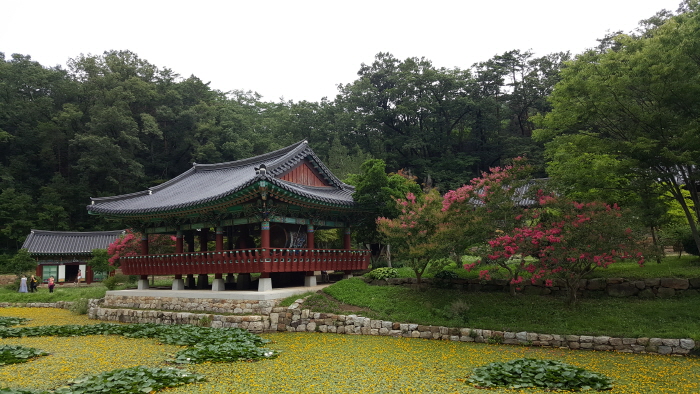

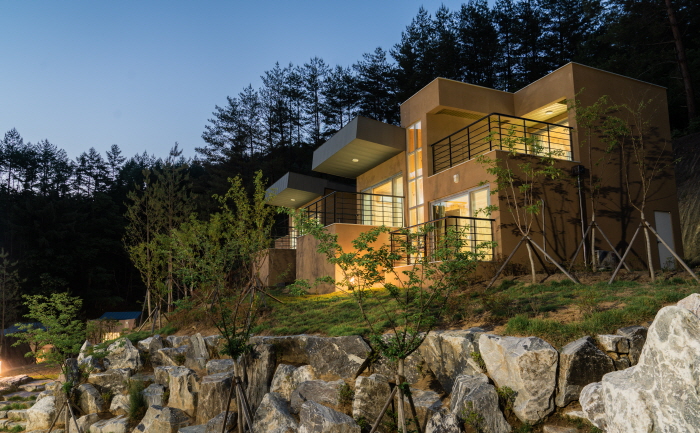
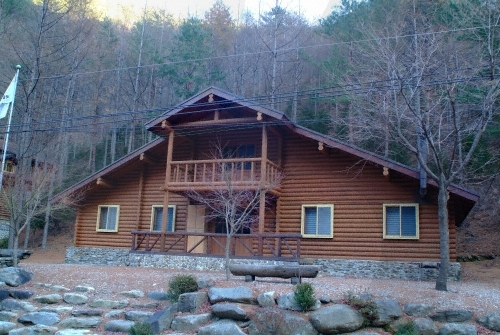
![Seongnyugul Cave [National Geopark] (성류굴 (경북 동해안 국가지질공원))](http://tong.visitkorea.or.kr/cms/resource/42/2613142_image2_1.jpg)
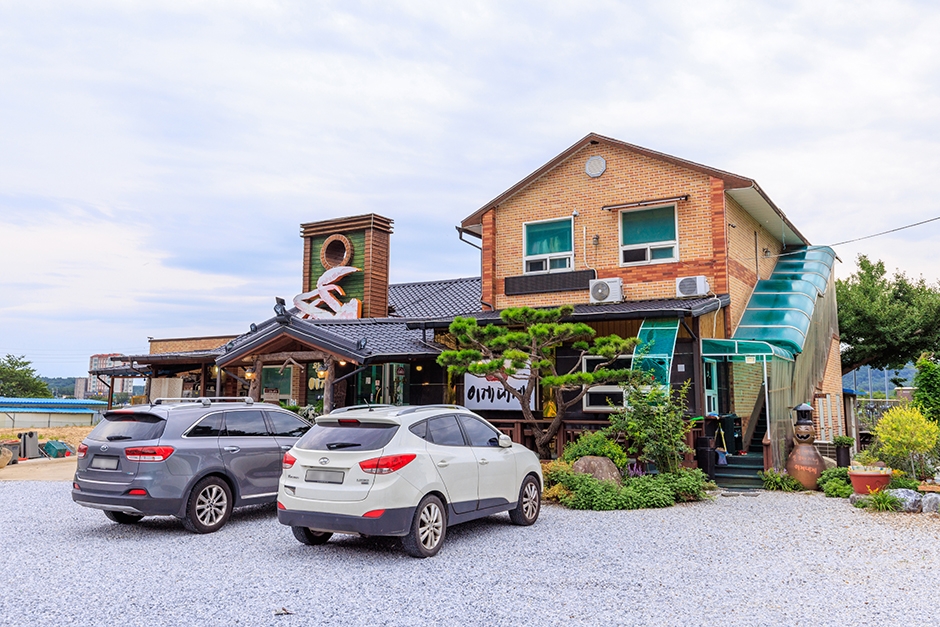
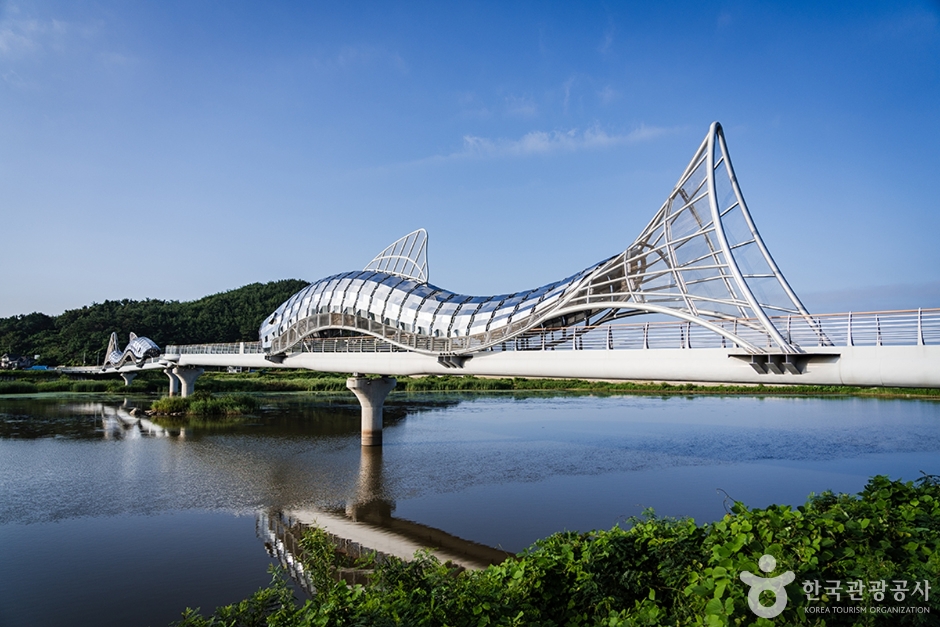
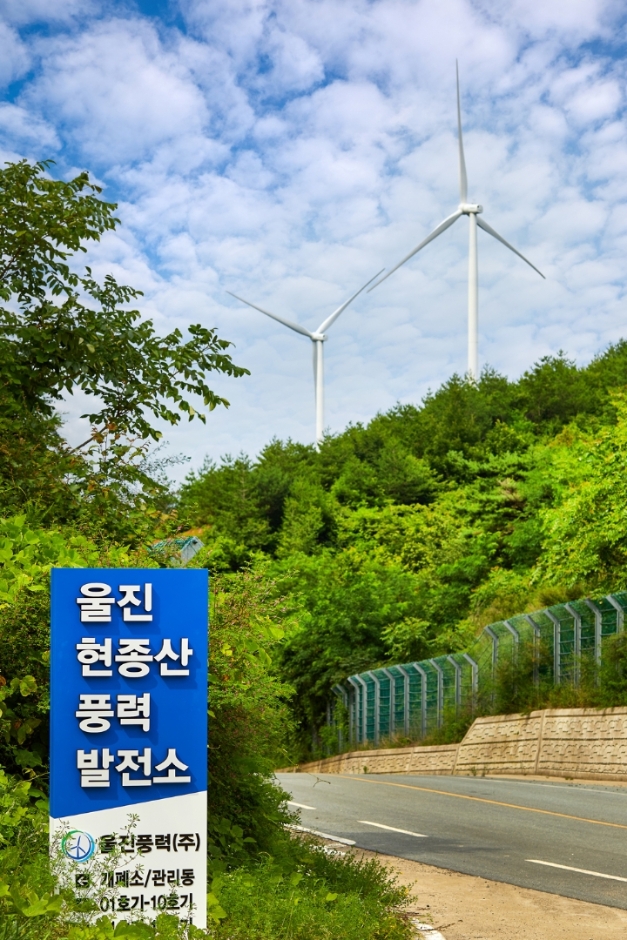
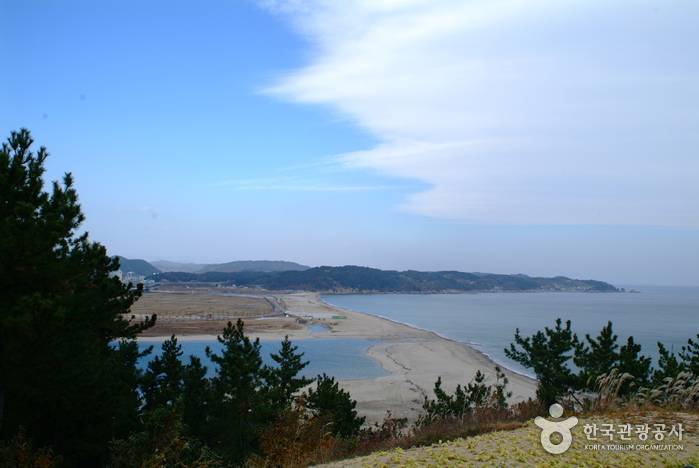
 English
English
 한국어
한국어 日本語
日本語 中文(简体)
中文(简体) Deutsch
Deutsch Français
Français Español
Español Русский
Русский